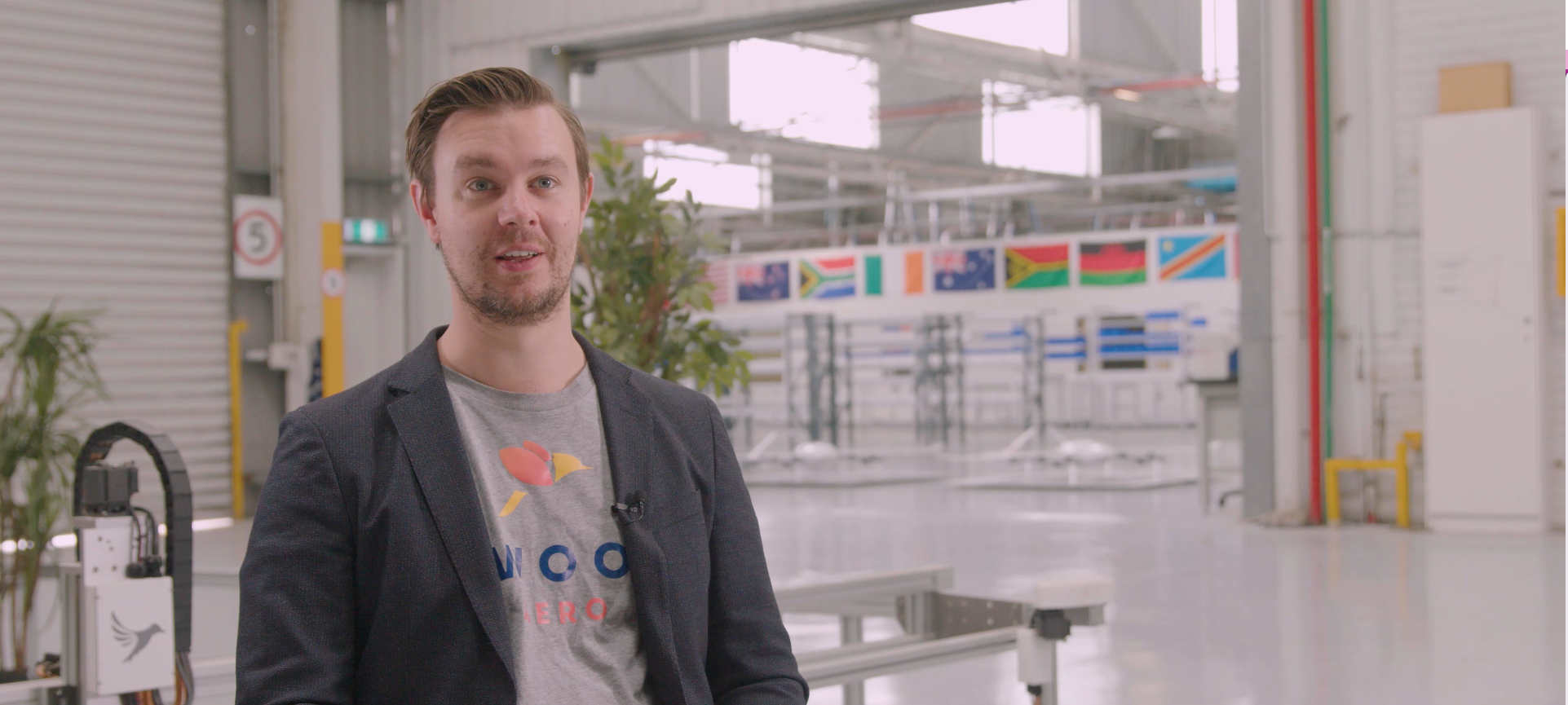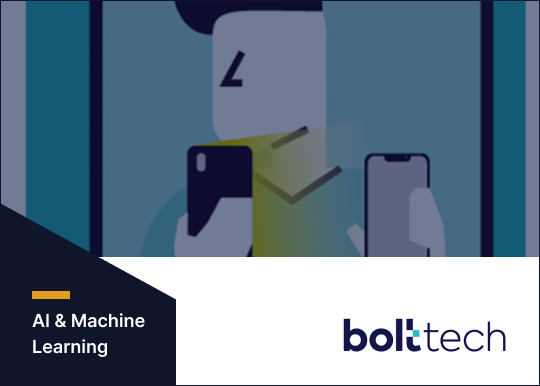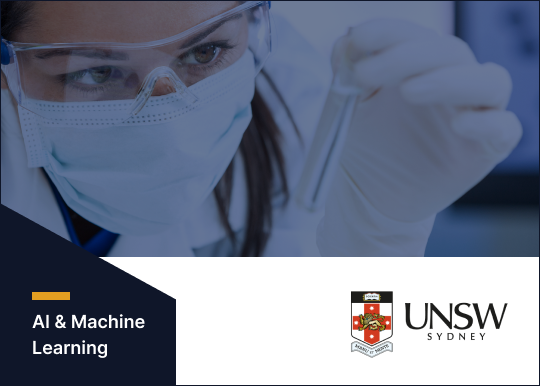CASE STUDY
Swoop Aero: Integrating AWS IoT Core and Machine Learning for critical air logistics
Combining autonomous drones with emerging technology to augment Swoop Aero’s delivery of critical items.

At a glance
DiUS partnered with Swoop Aero to upgrade its technology platform with AWS IoT Core to enable greater reliability, security and safety at scale across its two-way autonomous drone networks. The underlying embedded firmware built by DiUS enabled feature-rich application software to be developed for the drones, including Edge AI capabilities. State-of-the-art computer vision models are now being deployed to ensure the safe landing of its fleet, while enabling the expansion of its services to other impact-driven use cases including search and rescue, natural disaster management and environmental conservation.
Our services:
Meet Swoop Aero
Swoop Aero is an Australian integrated drone logistics company founded to transform how the world moves by making access to the skies seamless. Approved to fly in 14 countries & underpinning 19,000 safe operational flights, the Melbourne-based scale up has built a technology platform that enables seamless drone logistics at scale & offers its solution to large organisations to run localised medical transport networks. To date, Swoop has transported 1,000,000+ critical items & reached over 3.5m people, globally. Its future is to combine networks and operate an integrated drone logistics service for entire populations, offering a range of services from medical delivery to emergency management to retail and e-commerce accessible by 1 billion people in 2030.
Since launching in 2018, Swoop Aero has worked with some of the largest organisations in global health, including UNICEF, The Gates Foundation, UK Aid, USAID, and Gavi, the Vaccine Alliance. The team’s forward-thinking approach to healthcare and successful operations in three continents has led to Swoop Aero being recognised globally as a leader in the air logistics industry.
The challenge
The need for innovative health solutions has never been greater
Already operating in several countries from Africa and Europe to the Pacifics, demand for Swoop Aero’s medical air logistics service grew dramatically during the COVID-19 pandemic. The Melbourne-based startup needed to increase the scale of its operations, fast. In doing so, it needed to maintain and improve the quality, reliability and security of its global fleet.
With its drones operating Beyond Visual Line of Sight (BVLOS), Swoop Aero also needed to ensure the highest level of safety for its service. Swoop Aero already had landing cameras onboard for seeing QR codes to accurately land at remote sites, however saw the opportunity to leverage Artificial Intelligence (AI) and Machine Learning to improve safety even further.
Looking for a technology partner specialising in digital, data and devices, with specialist expertise in IoT and Machine Learning, Swoop Aero partnered with DiUS to upgrade its technology platform with AWS IoT Core, enable feature-rich application software and deploy state-of-the-art computer vision models for greater reliability, security and safety across its two-way autonomous drone networks.
“DiUS helped us scale quickly and leverage IoT, computer vision and remote update capabilities to accelerate and improve the security, reliability and safety of our service.”
– Andrew Thomas, Chief Solutions Architect, Swoop Aero.
Swoop Aero - Flying further, faster & safer with emerging tech
The team at Swoop Aero discusses how DiUS integrated IoT and machine learning into its fleet of autonomous drones


What we did
DiUS provided specialist capabilities in embedded engineering, AWS IoT Core, cloud architecture, data analytics and computer vision
In collaboration with Swoop Aero, DiUS started by performing a health check to assess the current platform—end-to-end architecture, deployment approach and production readiness—against the business drivers. This was followed by recommendations and a future-state architecture to ensure best practices were maintained.
Early on, the decision was made to move from a Raspberry Pi-based platform to the NVIDIA Jetson Nano to enable feature-rich capabilities and ensure the company’s leading position in a growing industry. To ensure readiness for production and scale, BuildRoot was chosen as the underlying Linux operating system for the embedded platform, along with the adoption of AWS IoT Core for the remote management, provisioning and deployment of over-the-air updates. Secure Boot with signed and encrypted firmware together with full storage encryption was employed to both ensure the authenticity and integrity of the firmware, which is vital for aerospace applications, and also to help protect the company’s intellectual property.
In order to improve operational efficiency, reliability and safety the team looked to unlock the power of data in a number of valuable ways. Firstly, a custom data automation pipeline was built to gain insights from the drones instrumentation and reusable patterns were established to define triggers of events and calls to action. Unlike the data processed for typical business analytics, drone flight data consists of multiple streams of log events and sensor measurements sampled at disparate frequencies. The analytics framework was required to combine these information streams to give a coherent story of a flight.
Additionally, to ensure the safe landing of its fleet, the team considered various approaches for computer vision models, taking into account the required response times, unreliable or no network connectivity and relatively small compute power. Looking at the constraints, and the data—in this case, the vision from a downward-facing camera—it was clear that the problem couldn’t be solved with an existing machine learning service.
The team used state-of-the-art data pre-processing techniques to slice the images, along with custom computer vision models deployed at the edge to achieve the results needed. Sagemaker Ground Truth and Amazon Augmented AI were used for the data labelling and workflow. SageMaker Neo was used to optimise and convert the model for the device, and SageMaker Pipelines is being used to manage the end-to-end machine learning workflow for training, versioning, validation and deployment.
This Edge AI solution is cutting edge, bringing together a deep-learning object detection model, deployed to a drone that runs on a custom built Linux platform. This is quite unique and sets the foundation for further computer vision scenarios in the future.
Results for Swoop Aero
Aircrafts can now fly further, faster, and safer with local teams delivering critical healthcare logistics
Swoop Aero’s global fleet is now equipped with industrial level security and the ability to perform simple over-the-air updates. Features and safety improvements are constantly added to the fleet regardless of location, unlocking the capability to deliver optimal and up-to-date technology without the requirement of engineers in the field.
This simple fleet management capability allows Swoop Aero to remove detailed “in field” technical skills and easily train local talent to operate with local teams—in severe conditions—and with minimal human contact within the supply chain. This has also contributed to Swoop Aero becoming the first company in the world to remotely pilot commercial drones from another country and provide end-to-end service solutions, despite the challenges of COVID-19.
“Our over-the-air update capacity and successful integration of innovative IoT technology for flight log analytics and safety have contributed to our success and scalability. We’ve successfully deployed our service across eight countries, for a range of use-cases including pharmaceutical distribution, surf lifesaving, and natural disaster management.”
– Eric Peck, Co-founder and CEO
Flight data is automatically uploaded from every flight into Swoop Aero’s cloud platform for stringent review and analysis. Through this process, Swoop Aero performs preventative maintenance, using insights into system reliability and performance from its cloud-based Digital Twin system to deliver world-leading airworthiness outcomes.
The state-of-the art computer vision models run in real time onboard Swoop Aero’s two-way autonomous drones and identifies if a person or animal is within the landing zone, giving the aircraft the ability to abort a landing, while ensuring the highest level of safety for its service.
The deployment of IoT & ML has enabled Swoop Aero to fly further, faster & safer, delivering critical healthcare logistics across a geographical radius of 37,445 sq/km in DR Congo. Swoop has also successfully moved 1m items by drone & commenced B2C drone delivery in Australia, kicked-off a joint certification program with FAA & CASA, been granted nation-wide approval for drone operations in Malawi, awarded BVLOS approval in 14 countries & launched ship to shore maritime operations in Singapore.
Closer to home, Swoop Aero is running operations in regional Queensland to improve the availability and accessibility of essential healthcare for remote communities, alongside TerryWhite Chemmart and Symbion. In 2021, Swoop Aero obtained BVLOS approval for medical logistics operations in Queensland which allows them to operate in a fully integrated airspace, a first in Australia.






